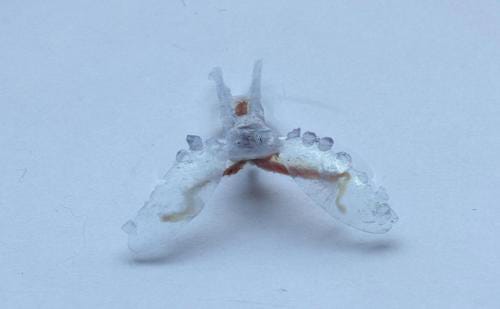And Now for Something Completely Different: The Slugbot
Nancy Crotti
October 6, 2016
1 Min Read
In one of the latest examples of designers combining mechanical parts with organic tissue, Case Western Reserve University researchers created a 3-D printed robot that's less than 2 in. long, printed out of flexible polymers and powered by mouth muscle tissue from a sea slug. They went with sea slug muscle tissue because mechanical actuators were not as safe and tended to be rigid in such a tiny robot. An external electric field controls the robot, though its creators plan to use sea slug nerve tissue as a controller in future versions.
Continue >>
[Image courtesy of Case Western University]
About the Author(s)
Sign up for the QMED & MD+DI Daily newsletter.
You May Also Like





